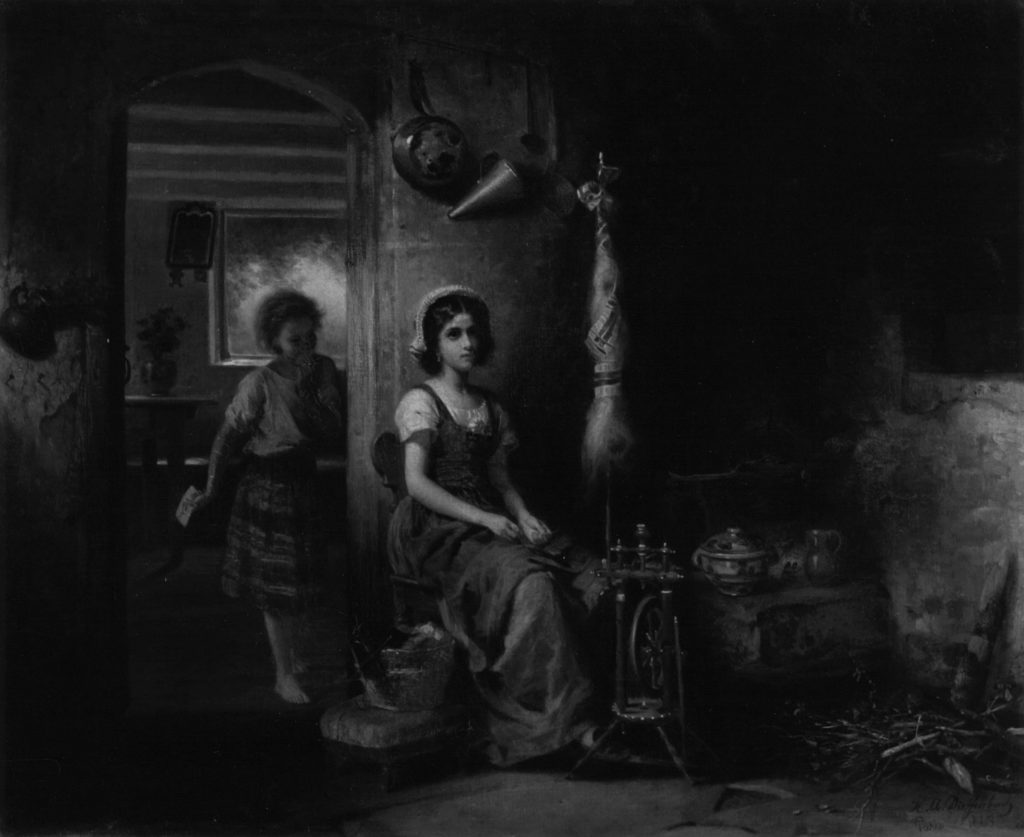Daughters in 18th and 19th-centuries households in New England participated in the “textile production of a family throughout their teenage years by spinning, weaving, sewing, knitting, and quilting.” The spinning wheel, for example, was seen as “an essential expression of the New England woman’s devotion to her home and family, and of her self-sufficiency. ” Eliza Buckminster wrote in 1838, ” All the linen and cotton for the use of the family were spun n the house.” Groups of women formed spinning parties or frolics coming together in the afternoon and spinning their wheels until early evening with a spread of custard pies, tea, and fortunetelling with tea leaves.
I learned about spinning frolics in a wonderful new resource for my book on Elizabeth Colt, “Our Own Snug Fireplace: Images of New England Home, 1760-1860,” authored by Jane C. Nylander. My hope is to explore the role of spinning in the finished works like Samplers and quilts by women in the domestic space. What I am learning about women in this era is the relationship between domestic objects and the dual roles they played in both utility as well as for ornament.

In the collection of Elizabeth Colt’s bequeathed works to the Wadsworth Atheneum, a lovely painting of a young girl by her spinning wheel. At this writing, I do not know the background of the work or its significance to Elizabeth but am excited to learn more about the painting and its parallels to women in Hartford during this era. Painted by Anton Heinrich Dieffenbach in 1865, its title “Dreaming,” procures a connection I think all young girls have in the space of domesticity’s monotonous tasks. Image Credit: Wadsworth Atheneum
